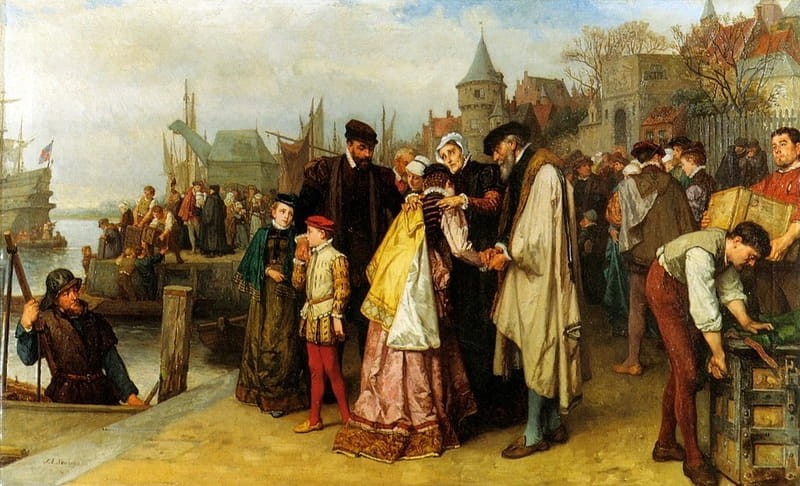The 1680s had been a difficult decade for London’s livery companies. The Crown’s attack on the ‘Whig’ faction and James II’s assault on the ‘Tories’ had caused them to surrender their charters and be purged of thousands of their members. Elizabeth I and James I had both extracted large sums from the companies. During the civil wars of 1640s and 1650s, it is impossible to know the exact amount they contributed to both the Crown and Parliament, mostly in loans that were never repaid. Against this backdrop of political attack, court action and financial stress, it is unsurprising that many members of the Masons’ Company were reluctant either to assume or to discharge the responsibilities of office. The Great Fire of 1666 destroyed 44 company halls and devastated their property portfolios, wiping out much of their rental income. The Masons’ Company was a going concern and by 1690 it went on its knees.
To pay for its royal charter, the Masons’s Company borrowed £800 from Anthony and Anne Light in return for 22 annual payments of £80. However, it was unable to meet its obligations and defaulted on the payments, increasing its debts. By the end of the 17th century, the Masons’s Company was so short of money that, in 1681, it agreed to have only a breakfast on Lord Mayor’s Day.
With the Rebuilding of London Act of 1667, the Parliament had unwisely removed for the building worker in London any economic or legal compulsion to join a Company or Guild, thus allowing any skilled labourer to work on the city’s reconstruction on the same terms as a freeman.
The Masons’ Company’s finances improved in the 1690s due to the return to political stability under William III and Mary II and through hard work, ingenuity and generosity, the Company’s finances were put back on a firmer footing.
In 1694, the Company applied for an Act to the London’s Common Council which required all those who worked as masons in London to join the Masons’ Company.
The Masons’ Company’s Act of 1696-1705 was an initial success, with 28 men admitted to the ranks between 1696 and 1705.
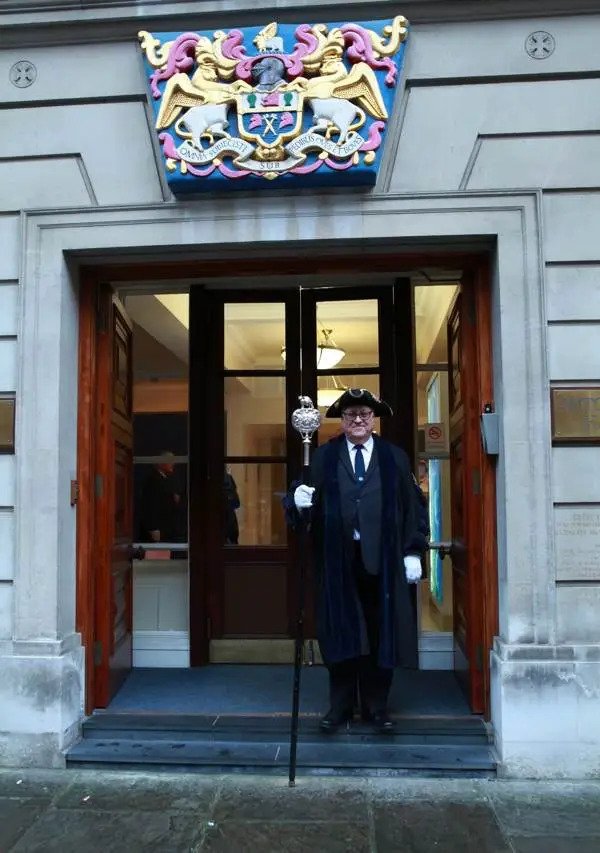
However, by 1706, the initiatives had run out of steam. To enlarge its membership, the Masons’ Company instituted two incentives: lowering its redemption fine from 36s to 3s 4d and offering a commission of 2s 6d for each admission. It seems that a lucrative market opened up at the Guildhall in redemption admissions because, following news that several other Companies were paying more for every member their ministers and officers brought , the Masons’ enhanced their gratuities to 6s.
This was an effective policy. In the 30-year period from 1676 to 1705 the Company had admitted 357 freemen but from 1706 to 1735 the number increased to 428.
More members meant more of their sons joining and receiving the freedom, which lead to more people paying quarterage and more people holding office.
DAVID GROS OF THE MASONS’ COMPANY
David Gros or Le Gross, the Company’s clerk, was given one of the houses adjoining Masons’ Hall by the Court in January 1717 for his ‘good and faithful Services’ and efforts to introduce new members by redemption (i.e. by fee payment).
Le Gross was born in 1682 and was connected to the Gros or Le Gross of Cornwall. He was elected as clerk of the Masons’ Company in June 1708 and in 1717 he was serving as secretary to the governor and directors of the Bank of England. He probably ceased to work at the Guildhall, but he continued as clerk of the Masons’ Co, until February 1721. Le Gross was an important figure in early eighteenth-century London politics, finance and administration.
He was a prominent Whig and although not himself a Huguenot, he had connections with the French merchants and exchange brokers who established themselves in London’s stock exchanges and insurance markets. In 1708, Le Gross became Company clerk and introduced 21 admissions to the freedom of the Masons’ Company, five of which were exchange brokers. When the Masons’ Company court rewarded Le Gross for his efforts, they took particular note of the benefit and advantage the Corporation received from the many substantial Traders and others whom were recruited through his efforts. The Company’s intake of redemptioners in the early eighteenth century was cosmopolitan, with twelve of the 19 exchange brokers, admitted by redemption, not English. At least nine of those were Frenchmen wand identifiably Huguenot.
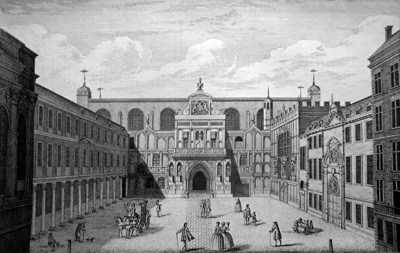
Old London Guildhall 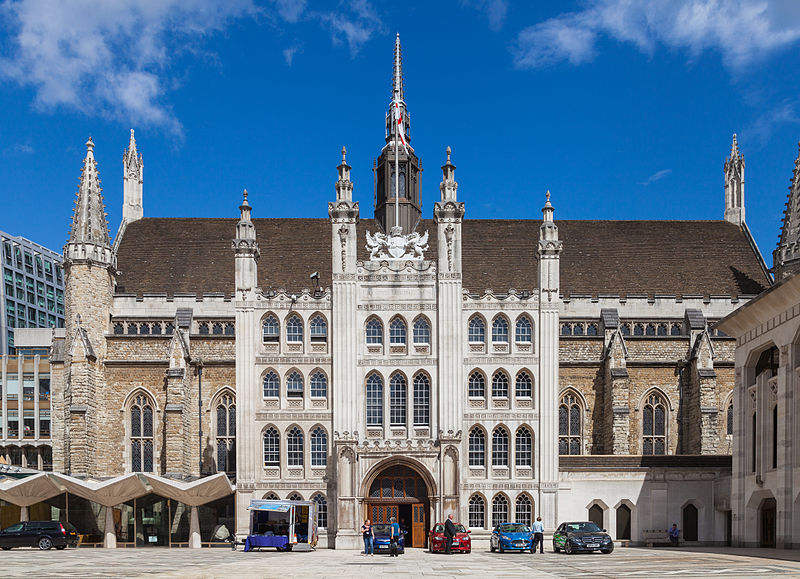
The Guildhall today
But the Company’s intake of international redemptioners was not limited to exchange brokers. Huguenots joined the Masons’ Company for the social and fraternal aspects of Company life, as it was a tradition in London, and to take the livery and thereby acquire the right to vote.
Two particularly noteworthy admissions by redemption were of women with French names, such as Mary Latour and Mary Paramor. Women had traditionally only participated in company life as wives or widows, but young women began to enter into corporate apprenticeships in greater numbers in the second half of the 17th century. As they completed those apprenticeships, they became eligible to join the Companies. In the first four decades of the 18th century, nine women – mostly business owners – took up the freedom of the Company by redemption. For example Anne Baker, who joined the Co. in March 1715, was a victualler in Finch Lane, while Anne Sparhawke and Katherine Wight, who were admitted to the freedom together in March 1735, were milliners and business partners.
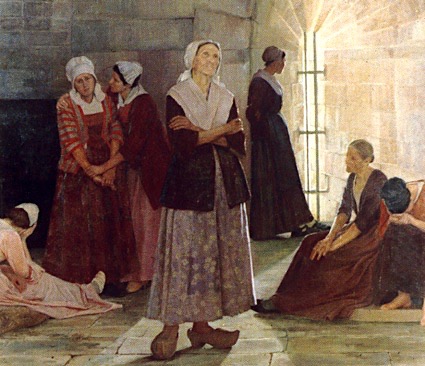
Certainly, this study has shown that Huguenots diffused quite extensively into the wider livery as, indeed, they did into London society generally. It seems also that the new entrants were easily absorbed into the Masons’ Company’s ranks. There is no evidence for religious division in the contemporary Masons’ Company, and not once was the confession, or indeed the nationality, of those joining the Company marked next to the name of an entrant. A much liberal way than today! As far as members of the Masons’ Company were concerned, at least according to the official records, the Huguenots -and indeed Germans and Dutchmen -who joined the Company, were no different to any other freeman of London.
Children of Huguenot descent were admitted to the Company by patrimony, and Huguenots bound their children as apprentices. Between 1706 and 1735, two dozen of the 428 men and women who joined the Masons’ Company were identifiably as Huguenot, making them five per cent of the population of London.
In the late eighteenth and early nineteenth centuries, City’s companies completed their transformation into ‘corporations concerned primarily with the administration of their valuable freehold and trust estates and with sponsoring convivial, charitable and educational activities. In its early eighteenth-century history, no more than a dozen of the 32 men and women admitted to the freedom in 1712 identified as masons. In 1724, the Company admitted two attorneys at the Lord Mayor’s court and a clerk in the town clerk’s office, and in 1734, just 29 of the 70 men on the Company’s livery worked or had worked in the craft of masonry.
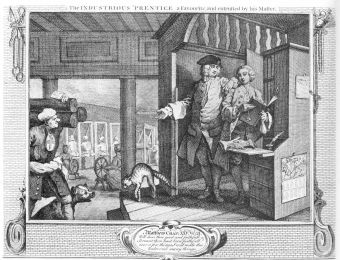
Throughout the 17th c. London Great Twelve companies had admitted more members unconnected with their traditional trades. As London’s workforce diversified and became increasingly specialised, the Masons’ Company’s membership began to disconnect from its traditional craft. This was a revolutionary development in the Company’s history and one with which Huguenots were clearly associated because none of those who joined the Masons’ Company were actually masons.
The Masons’ Company’s decision to lower its redemption fine and pay gratuities for referrals had long-lasting effects, helping to secure its future.
The Company experienced a remarkable turnaround in financial health by the end of the 17th century and certainly reached the nadir of its fortunes. In 1681, for example, it was so short of money that had agreed to have only a breakfast on Lord Mayor’s Day. In 1727, it was able to purchase £200 worth of interest-bearing stock and a property in Bishopsgate and in 1739, it spent well over £60 on food, drink, tobacco and music for the London Mayor’s Day. In 1680s and 90s the Co seems to have struggled to pay its pensions, yet in 1774, it was able to pay five men an annual pension of £2 each and seven widows one of £ 1 each. Membership of the Company was now much more attractive, worthwhile and fun.
Membership of the Company was, at the end of this remarkable period, much more attractive, worthwhile and fun and the change from operative into a speculative Freemasonry had thus just begun.
Extract from Ian Stone’s paper “Huguenots, Whigs and the Remodelling of the Masons’ Company, 1680-1740 – The Huguenbot Society Journal vol.35, 2022
- Influencia de la Masonería en Chile - April 29, 2024
- Pomegranate in Freemasonry – its significance - March 11, 2024
- Inns and Innkeepers’ incidence in Freemasonry expansion - February 28, 2024

